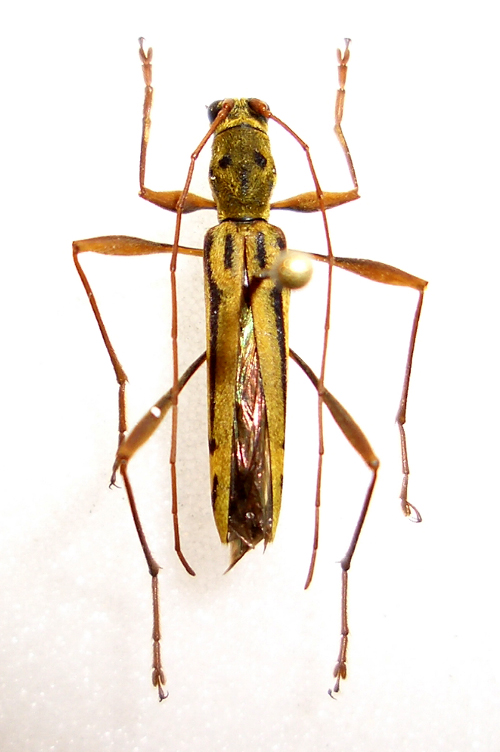| Author |
 Topic Topic  |
|
|
Sergi
Member Rosenbergia
   
Spain
1792 Posts |
 Posted - 24/01/2016 : 12:34:28 Posted - 24/01/2016 : 12:34:28



|

187.74 KB
From China, Yunnan.
Size: 14 mm |
Edited by - Xavier on 25/01/2016 20:51:23 |
|
|
nasa
Member Rosalia
  
China
971 Posts |
 Posted - 24/01/2016 : 16:50:53 Posted - 24/01/2016 : 16:50:53



|
| Rhaphuma sp |
 |
|
|
Xavier
Scientific Collaborator
    
France
12520 Posts |
 Posted - 25/01/2016 : 12:26:27 Posted - 25/01/2016 : 12:26:27



|
| Rhaphuma nigrolineata Pic, 1915 for me |
 |
|
|
horshehden
Member Purpuricenus
 
Czech Republic
424 Posts |
 Posted - 25/01/2016 : 19:54:07 Posted - 25/01/2016 : 19:54:07



|
| Or R. longissima (Pic, 1914). |
 |
|
|
Xavier
Scientific Collaborator
    
France
12520 Posts |
 Posted - 25/01/2016 : 20:36:56 Posted - 25/01/2016 : 20:36:56



|
| what is R.longissima Pic ? I do not find it... |
 |
|
|
Xavier
Scientific Collaborator
    
France
12520 Posts |
 Posted - 25/01/2016 : 20:40:44 Posted - 25/01/2016 : 20:40:44



|
| ok, Demonax longissimus Pic, 1914 which could be a Rhaphuma as I wrote here. |
Edited by - Xavier on 25/01/2016 20:53:05 |
 |
|
|
horshehden
Member Purpuricenus
 
Czech Republic
424 Posts |
 Posted - 25/01/2016 : 22:01:37 Posted - 25/01/2016 : 22:01:37



|
The specimen, which Sergi is showing us, is coming from NW Yunnan, just a few kilometers (10?) from the Xizang border. I collected the same species there as well (together with the guy from whom Sergi bought it) and it is Rhaphuma, very similar in body shape to eg. R. elongata Gressitt.
Most probably, it was described by Pic as D. longissimus and accidently also by Gressit under the same name several years later.
The type series of Gressitt belongs definitely to the same species as pictured by Sergi. |
 |
|
|
Xavier
Scientific Collaborator
    
France
12520 Posts |
 Posted - 25/01/2016 : 22:53:42 Posted - 25/01/2016 : 22:53:42



|
Do you think Rhaphuma elongata Gressitt could be the same species ?
Here a specimen and the original drawing. |
 |
|
|
horshehden
Member Purpuricenus
 
Czech Republic
424 Posts |
 Posted - 26/01/2016 : 21:24:49 Posted - 26/01/2016 : 21:24:49



|
No! I just said it's of very similar body shape (including head, antennae etc). Thus, both should belong to the same genus in my opinion. Note also that Gressitt compared R. elongata to his "longissimus".
Of course, they do not much well the type species of any of these genera (ie neither R. quadricolor nor D. nigrofasciatus), but it is another issue.
|
 |
|
| |
 Topic Topic  |
|


